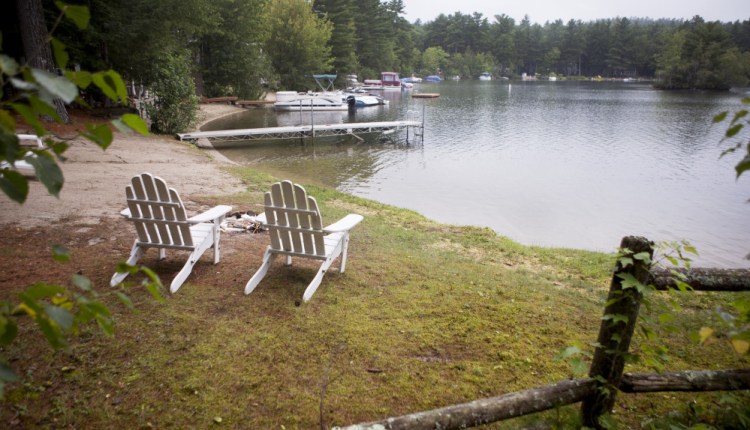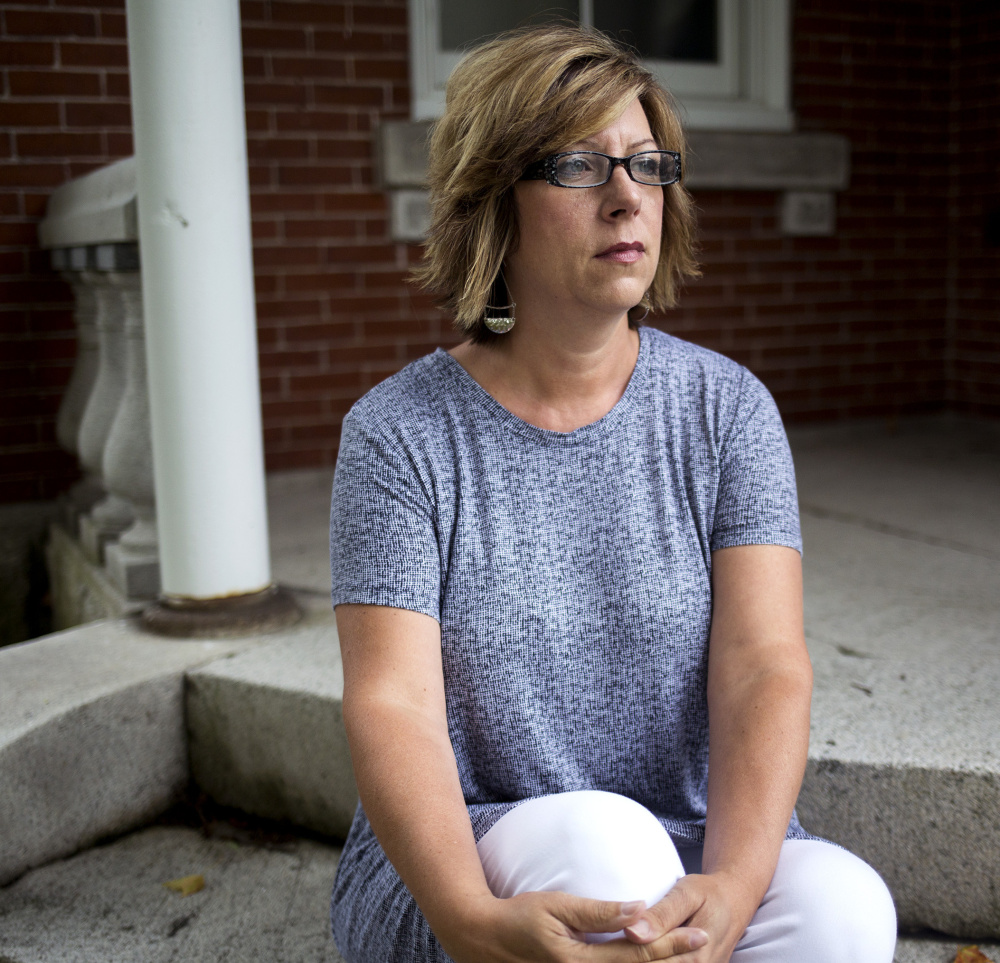If Jennifer White calls 911, a Raymond police officer or firetruck responds. Letters and GPS directions to her home in the Little Sebago Lodges use a Raymond address. Raymond Elementary School and the Raymond post office are both less than 5 miles from her front door.
But when her family pays property taxes, their money goes to the town of Gray.
“There’s always been an identity crisis,” said White, who has lived in her home since 2003.
White lives on the west side of Little Sebago Lake, which is inside the Gray town line. She and a group of her neighbors say the water separates them from Gray, and they feel more of a connection with Raymond. They have also expressed dissatisfaction with Gray’s leaders and higher property tax rate, especially as a looming revaluation could increase their bills next year.
So they have organized an effort to secede from Gray and join Raymond.
In years past, other Maine municipalities and islands have sought autonomy. Long Island left Portland more than two decades ago. Frye Island, a seasonal community on Sebago Lake, broke away from Standish in 1998. More recently, in 2007, Chebeague Island separated from the Portland suburb of Cumberland. Peaks Island has tried and failed to secede from Portland. Elsewhere in the state, a group of residents in northern Maine is currently moving toward independence from Caribou.
The effort to move from one town to another, however, is rare. It will also require signatures from homeowners, a referendum and the support of the Maine Legislature.
“It’s very, very difficult to do,” said Eric Conrad, spokesman for the Maine Municipal Association.
Should they succeed, a desirable chunk of lakefront property would shift from one tax base to another. According to the state, Gray’s valuation is $884 million. Based on the town’s assessing database and tax maps, the Gray Secession Committee has estimated the area’s collective value is at least $77 million, or nearly 9 percent of the town’s total value.
“My preference, and I think I can speak for the council on this, is for Gray to remain the same now and forever,” said Matthew Sturgis, chairman of the Gray Town Council.
Raymond Town Manager Don Willard said Raymond officials are not taking an active role, though they have met with the secession group.
“The residents should pursue all remedies that they could with the town of Gray to seek resolution to their concerns,” Willard said. “So the board (of selectmen) has taken no action and will take no action until that happens.”
Gray has roughly 7,770 residents, according to the 2010 census, and a $3.7 million budget, while Raymond has a population of 4,400 and a $2.6 million budget. The area in question includes about 350 taxable properties from the Little Sebago Lodges Association, Gore Road, Deer Acres, Brown Road, Lyons Point and Northern Oaks.
If more than half the registered voters in that area sign a petition, the committee would present their names to Gray. Gray would hold an advisory referendum within the secession area, and the parties would participate in mediation. Eventually, the Legislature would need to pass a state law to authorize secession. The departing residents would need to pay their portion of the town’s debt and make arrangements for their children with the local schools.
MORE SIGNATURES SOUGHT
The movement in Gray is just beginning. White and her committee notified the town of Gray about their formal effort to secede in late January. Their petition had 117 signatures as of Friday. The group says Gray’s voter registration list is not accurate, but they believe they need at least 160 names.
As the committee members go door to door, their central pitch is about geography. Driving around the lake to Gray’s town hall or dump means at least a 40-minute round trip. Because the towns have a mutual aid agreement for emergency services, Raymond is the first responder for these neighborhoods. While Gray plows their private roads, the committee said they could contract with a private company for winter maintenance.
But the primary dispute involves Gore Road, which crosses both towns and is the only access road for the secession area. For years, residents have been fighting with Gray over maintenance of a small private section. David Getchell, who has lived in the Little Sebago Lodges since 1975, remembered once traveling with his dad in a Raymond ambulance; the EMT had to wait to insert an IV because the potholes were so disruptive. Battling the town over those repairs drove Getchell to the secession committee.
“It was like pulling teeth to get them to fix the portion of the road,” he said.
For others, the incentive is financial. Raymond’s tax rate is $11.95 per $1,000 of assessed property value, while Gray’s rate is $18.30. The town of Gray is going through a revaluation for the first time since 2003, so property values and tax bills are likely to go up. Sturgis said residents should be notified of their new assessments in the spring.
The prospect of a higher tax bill put Lyons Point Road resident Brian McDonnell on alert. Like many others in the secession area, he and his wife live on the water.
“We’re a cash cow,” he said of the neighborhood. “They’re not going to let the cow go away without a fight.”
Scott Coyne, who lives on Steele Road with his wife, attended a meeting at McDonnell’s house last week for interested residents.
“We get all our services from Raymond, and Gray doesn’t do a thing,” Coyne said.
Sturgis, from the Gray Town Council, was confident the tensions between the lakeside neighborhood and the town could be resolved without secession.
“Each town makes a decision about how they spend their funds,” he said. “That is important to how those towns act, and you know that when you buy a house in a community.”
The committee, however, sees irreconcilable differences.
“It’s almost like a divorce,” White said. “We feel like we don’t want to be married to the town of Gray anymore.”
Send questions/comments to the editors.






Comments are no longer available on this story